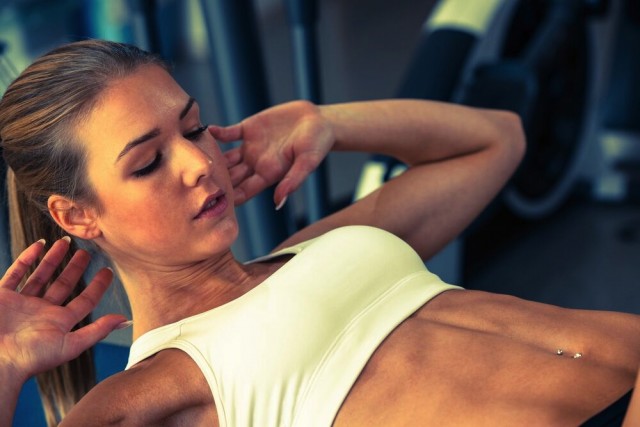
The Athletic Rider: Can’t I Just Get a ______ Exercise?
Training the rider-athlete is like training a horse: you can’t focus on just one thing and hope to be successful. Leah Hinnefield explains.
What question do you think a rider fitness trainer gets asked … a lot? I hear this at least once a week, if not more:
“Hey Coach, can you give me an exercise or two to help me with _________?”
The blank is “my seat,” “my leg,” “my core” or fill in the ________.
It’s true! My inbox is full of questions from riders who want me to recommend 1-2 exercises to help them improve their sitting trot or swinging leg or weak core. It sounds like a simple request. It seems like I should be able to just recommend crunches for core, squats for legs and hip flexor stretches for sitting trot.
The problem is that I can’t, and neither can any responsible fitness professional — at least not if the focus of that professional is to help riders to develop into athletic riders.
Riding is a performance sport that must balance the demand of two athletes working and coordinating to appear and function like one body and mind. Talk about increasing the challenges when it comes to designing a rider fitness program!
To properly train a rider (or any sports performance athlete, for that matter), a trainer must create an integrated training program. Integrated training simply means the program is comprehensive (not just a single exercise that addresses a single body part) and includes all of the necessary components to allow an athlete to perform at her highest level while protecting her against injury. An integrated training program for an athlete will focus on developing functional strength and neuromuscular efficiency, and this applies to a well-designed rider fitness program as well.
In other words, each workout must be designed in a way that enables an athlete to move multiple body parts efficiently in all planes of motion. As any rider knows, when you sit the trot, you are not just sitting — quite the opposite! You are engaged in your core (stable in the front, back and sides of your core — not just trying to hold your tummy in,) you are mobile in your hips (up and down, back and forth, and side to side,) you are fluid and following in your upper body and grounded in your legs. To be stable in your legs, you must be mobile in your hips, engaged in your core, and fluid and following in your upper body. Can you see where this is going?
To explain this multi-dimensional idea of movement in another way, athletes do not move one body part at a time in one direction at a time while the rest of the body is frozen in place. When a rider sits the trot with the horse bending on a circle, her outside leg moves back a bit, her inside leg remains at the girth while elongating, she shifts her weight in just a bit, rotates her hips and rotates her shoulders. She may lift a rein if a half halt or gentle rebalancing is needed. And so on. And so on. There are a lot of body parts going in a lot of directions. Now imagine this same break down of movement over an entire dressage test or a course of 10 jumps!
A fitness program whose purpose is to improve an athlete’s sports performance must train an athlete daily to do what she must do when performing. A rider fitness program must train a rider when she is unmounted so she can perform more fluidly when mounted. Returning to the example of the sitting trot, a rider does not need an exercise or even several exercises that focus exclusively on that movement in the saddle. She needs, instead, a complete program that focuses on all elements of rider fitness (core, flexibility, balance, strength, power and cardio) in order to create muscular balance, functional strength, and neuromuscular efficiency for optimal performance and a reduced chance of injury.
Don’t forget your partner in the equation: your horse is also an athlete and his program can and should be designed around the same model of integrated training for the same reasons!
Do you want to learn how to take the guesswork out of designing your rider fitness program or knowing if your current program is properly designed for improved sports performance? Stay tuned for next week’s blog!
Leah Hinnefeld is a lifelong equestrian who spent over a decade studying hoof health and metabolism in horses before turning her attention to rider fitness. Leah is a personal trainer certified by the National Academy of Sports Fitness and offers Virtual Fitness Training for riders and horse lovers. You can learn more about how to get fit to ride at http://theathleticrider.








Leave a Comment